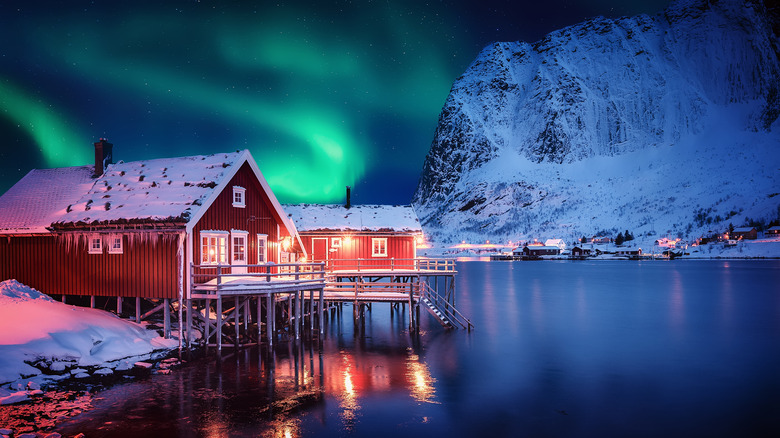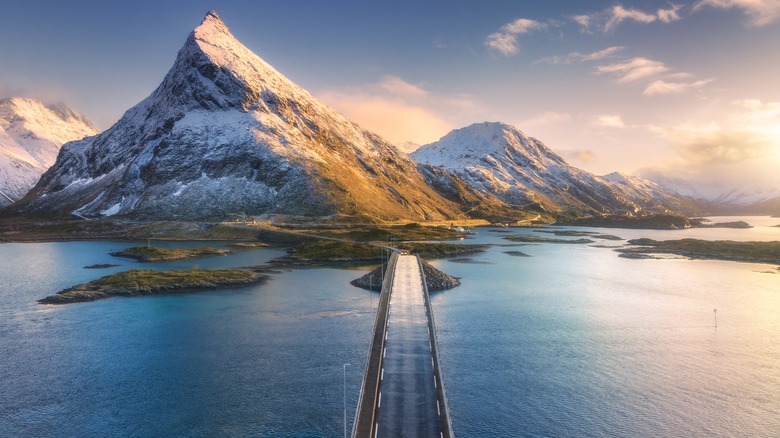The Lofoten Islands and how to get there
Set in the Norwegian Sea, the five main islands of the area are Austvågøya, Gimsøya, Vestvågøya, Flakstadøya, and Moskenesøya, though if you’re looking from a higher area of Bodø on the mainland or when approaching from the sea, it looks like one large island. The phenomenon is called the Lofoten Wall. The area has had residents since around 1120 C.E. and has been predominantly a fishing area, though tourism is now a major industry.
The Gulf Stream keeps the area around the Lofoten Islands warmer than you might expect, with highs around the 30s and 40s and lows around the high 20s Fahrenheit in the winter, and highs and lows in the 50s/60s and 40s/50s respectively in the summer. If you head there at the end of May through the middle of July, you won’t see the sun set at all, and from September through the middle of April, the Northern Lights are possible.
There are a number of ways to get there, including a four-hour ferry ride from Bodø, though that can be a little rough, so pack something if you get seasick easily. If you’re looking to go by plane, you can find flights that land in Svolvær or Evenes, or you can drive there over the south bridge (Kubholmleia) or the north bridge (Røssøystraumen).
What to do on the Lofoten Islands

The Lofoten Islands are full of hiking trails, and it’s so beautiful here that there are even photography tours you can take. Hiking is only one outdoor activity that you can find here, though. Of course, fishing is a big one, but you can also go bicycling, kayaking, skiing, and even arctic surfing. Yes, that is a real thing, and since these are islands, there are beaches to visit, even if the water is cold. The advance of wetsuit technology has made arctic surfing pretty popular.
If you’re a lover of wildlife, there are some wonderful animals to see around the islands. You can catch sea eagles fishing, see adorable puffins, and take a whale watching tour where you can see humpback and orca. Many of the boats are hydroelectric so it doesn’t make much noise. (Look for “silent” boat tours.) If you visit near the end of the year, there is a very popular Christmas market at Skårungen.
History lovers can visit the Kollehllaren Cave which boasts cave paintings that date back about three millennia, or visit the Vestvagoy museum which has artifacts from the Iron Age and the Viking Age. If you like Viking history, you can also visit the Lofotr Viking Museum where you can experience a reconstructed Viking longhouse.

